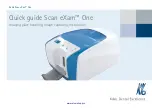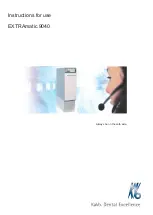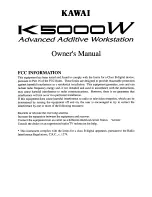
7
1,
8
m
t
Fig. 1
Forced evacuation under hood
The manufacturing company declines any and every responsability if the rules brought in this manual are not strictly
observed.
The manufacturer of the appliance declines all responsibility for damage caused by faulty installation, tampering with the
appliance, improper use, poor maintenance, failure to observe local regulations and unskilled use.
THE DISCHARGE OF MACHINE WHEN OUT OF USE MUST BE DONE IN COMPLIANCE WITH LAW. THE MACHINE
MUST BE DELIVERED TO FIRM AUTHORIZED FOR THE DISCHARGE OF MACHINE AND OF ITS COMPONENTS.
2. INSTALLATION
2.1 Installation of the appliance
The operations of installation, any conversion for use with other types of gas, start-up and the remedying of any faults in
the systems, must only be carried out by qualified staff, in accordance with current laws.
The gas systems and the rooms where the appliances are installed must fulfil the regulations existing in the various areas
and in particular consideration must be made of the fact that the air required for combustion of the burners is equal to 2
m
3
/h per kW of installed power and that accident prevention regulations must be
observed.
2.2 Installation
Remove the appliances from the packing and position them in the place of use,
levelling them and regulating their height by means of the adjustable feet or other
means.
Remove the protective film from the external panels, detaching it slowly to prevent
the glue from remaining.
It is important that the walls adjacent to the appliance are protected against the
heat. Place refractory sheets in between them place the appliances at least 200
mm away from the side or rear walls.
2.3 Fumes extraction
The appliances must be installed in rooms suitable for the extraction of
combustion products, in accordance with the provisions of the installation
instructions. Our equipment is considered (see specifications table) as:
“A1” TYPE GAS APPLIANCES
The A type appliances must be installed in sufficiently ventilated places in order to
prevent the concentrations of harmful substances in the room where the unit is installed. They are not designed to be
connected to a discharge line of combustible materials. These appliances must discharge the combustible products into
the appropriate hoods, or similar devices, connected to a flue of proven efficiency, or they may be connected directly to
an outdoor vent.
Failing this, the use of an extractor fan is permitted, connected directly to an external area, with sufficient capacity, which
will then be increased by the exchange of air necessary for the welfare of the workers under current regulations,
approximately 35 m³/h for each kW of gas power installed.
Forced fume evacuation under hood
. In this case, the end of the appliance’s exhaust pipe must be at least 1.8 m above
the floor on which the appliance stands (the ground), and the mouth of the combustion fume pipe must be inside the
same extractor hood (Fig. 1). The applia
nce’s gas supply must be connected to the forced evacuation system so the
former can be cut out in the event its capacity falls below that required by the law in force. It should only be possible to
restore the appliance’s gas supply manually.
2.4 Connecting up gas
Check on the rating plate (Fig. 2), under the fires on the left-hand side, that the appliance has been tested and approved
for the type of gas that the user uses.
Check that the nozzeles on the appliance are suitable for the available gas supply.
Check on the rating plate that the pressure reducer is adeguate to the appliance’s gas supply
If gas supply pressure deviates by more than 10% from nominal pressure, fit a pressure regulator upstream of the
appliance to ensure that nominal pressure is maintained.
Do not reduce the diameter of the pipe between the reducer and the appliance.
Fig. 2








































